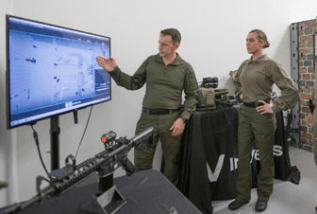Gamification In The Public Industry
Gamification involves individuals at a psychological degree, which is even more powerful than typical transactional engagement strategies.
— Brian Burke, Gamify: Exactly How Gamification Inspires People to Do Remarkable Things
Government training has actually never been more vital or extra complex. From energetic shooter readiness to cybersecurity preparedness, public slaves are progressively called to navigate high-stakes scenarios where choices can have life-or-death consequences. Standard training approaches like fixed discussions, dense guidebooks, or occasional workshops commonly fall short to involve or prepare individuals for the dynamic challenges they face.
Enter gamification: the application of game layout concepts to non-game contexts. In federal government training, gamification is greater than a buzzword; it’s a proven approach that boosts interaction, enhances expertise retention, and develops real-world preparedness. Whether it’s utilizing Augmented Reality to imitate emergencies, developing serious games for calamity response, or immersing cyber groups in high-risk assault scenarios, government firms are welcoming gamified discovering to transform training right into a hands-on, high-impact experience.
Let’s explore just how three prominent examples– DHS’s AR-based active shooter training, FEMA’s significant games, and the ITU’s Cyber Ranges– show the power and capacity of gamification in the general public industry.
Instances Of Gamification In Federal government
DHS: Increased Reality For Energetic Shooter Training
Via the National Urban Protection Innovation Research Laboratory (NUSTL), the U.S. Division of Homeland Protection (DHS) has actually deployed Enhanced Fact (AR) systems to sustain active shooter feedback training. [1] These systems overlay electronic risks and items onto real-world environments, transforming an ordinary classroom or office right into a vibrant training ground. Students move with physical spaces while responding to online simulation, all presented in genuine time through AR headsets or smart phones.

Image from dhs.gov [1]
Why It Functions
AR gamifies the setting itself, offering immersive comments loopholes that resemble real-life stressors. Participants need to analyze dangers, make decisions, and communicate under stress– just like they would certainly during an actual emergency. This hands-on, scenario-based training enhances situational awareness and improves retention much beyond typical lecture-based formats.
The outcome? First -responders exit with muscle mass memory and confidence that fixed drills rarely supply.
FEMA: Serious Gamings For Calamity Reaction
The Federal Emergency Situation Management Company (FEMA) utilizes serious games– interactive, scenario-based simulations– to prepare public officials for natural disasters and complex emergency situations. [2] One instance is FEMA’s Emergency situation Management Institute’s Virtual Tabletop Workouts (VTTX), which enable individuals to role-play catastrophe situations in a digital setting. Whether working with a cyclone emptying or replying to a chemical spill, gamers make decisions, designate sources, and adapt to altering conditions.
Why It Works
Major video games reinforce systems thinking, permitting individuals to see just how their choices impact others in actual time. They likewise cultivate cross-agency partnership, since gamers have to function as groups to address complex challenges. With integrated racking up, time restraints, and post-game responses, these simulations develop a compelling understanding experience that reflects the complexity of real-life crisis monitoring.
FEMA’s use of gamification supports not just preparedness yet also essential reflection, making it possible for leaders to test their procedures and improve them prior to a disaster ever before strikes.
ITU: Cyber Ranges And International Hazard Response
The International Telecommunication Union (ITU)– a UN company– uses Cyber Ranges to train national, local, and international cyber feedback teams on just how to face digital threats like ransomware, DDoS attacks, and crucial framework hacks. [3] These gamified simulations area individuals in an online setting where they should defend networks, recognize susceptabilities, and have strikes under time pressure.

Picture from itu.int [3]
Why It Works
Cybersecurity threats evolve quickly, and standard “list” training wants. Cyber Ranges produce high-fidelity simulations that imitate the complexity of modern cyber warfare. Gamification elements– scoring systems, substitute adversaries, real-time event accelerations– drive interaction and build the practical abilities needed for contemporary digital protection.
What makes ITU’s technique particularly powerful is its collaborative global focus. Groups from different countries can engage in shared simulations, promoting shared standards, quick skill-building, and worldwide cybersecurity resilience.
Why Gamification Matters For Government Training
These examples expose a bigger fact: gamification isn’t almost enjoyable– it’s about function. In high-stakes fields where lives, protection, and public count on are on the line, gamification deals:
- Involvement– Interactive scenarios increase student motivation and lower cognitive exhaustion.
- Retention– Gamified training activates several discovering methods (visual, acoustic, kinesthetic), enhancing memory and understanding.
- Comments– Real-time scoring and debriefs give actionable understandings for learners and leaders.
- Adaptability– Simulations can be tailored for varied audiences and altering risks.
- Partnership– Team-based gameplay cultivates cross-functional sychronisation and communication.
As technology advances and public difficulties expand even more complicated, gamification remains to play an important function in preparing government professionals– not just to learn, yet to lead in crisis.
From Enhanced Truth in law enforcement to calamity response video games and cyber warfare simulations, gamification is no more a future trend; it’s a current essential. For firms seeking to construct resilient, ready, and dexterous groups, it’s time to raise the strategy with game-based discovering.
Recommendations:
[1] Increased Fact (AR) Training Systems for First Responders
[2] Significant games in FEMA Regional Response
[3] CyberDrills

